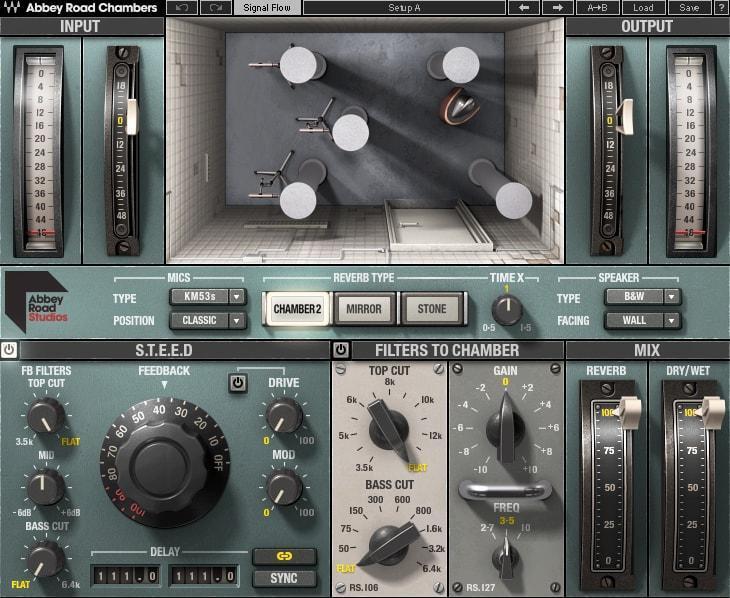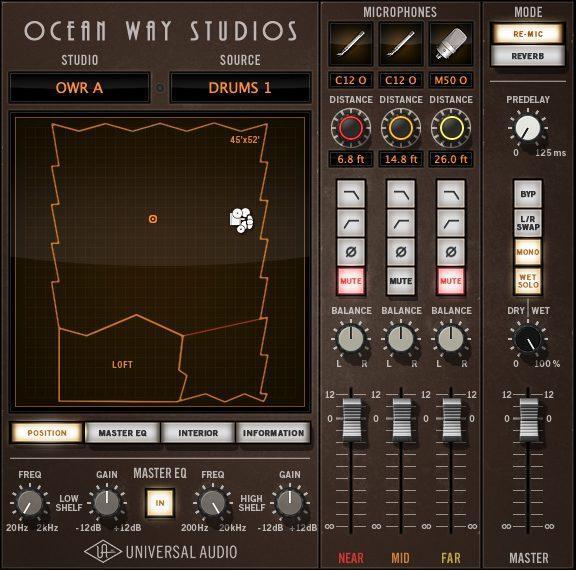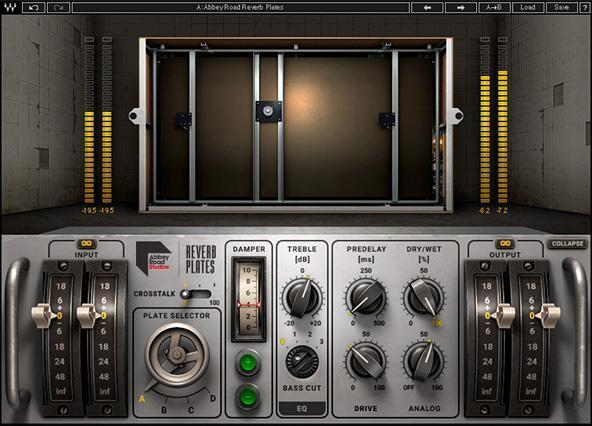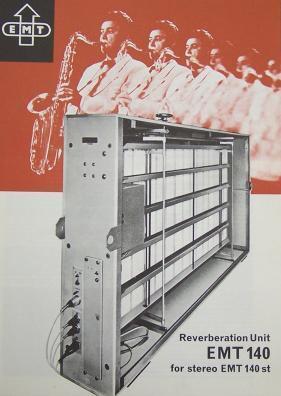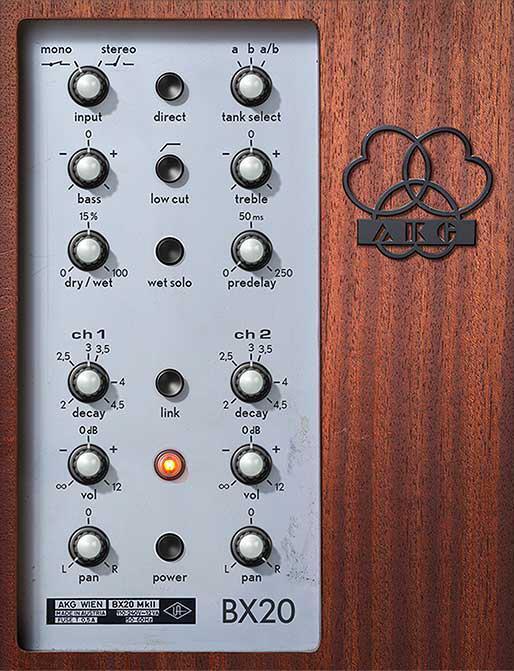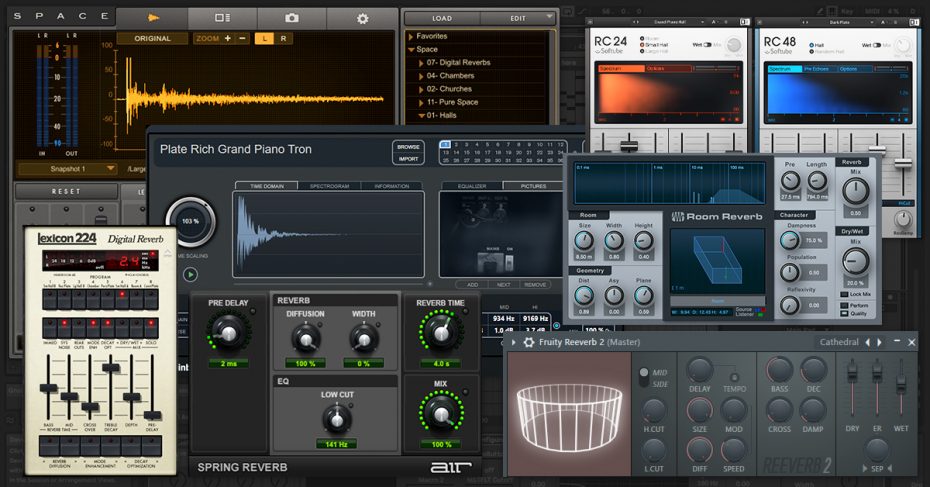
From subtle air to washes of lush ambience, reverb is one of the audio engineer’s most often used tools — it’s common to almost every musical recording that exists. With today’s plug-ins and multi-effects processors, you get a myriad of different types of reverbs to choose from. The halls, chambers, and rooms successfully replicate the sounds of actual physical spaces. Other types such as plates and springs re-create the effects of man-made devices. So, what are the differences between these types of reverbs? And what sources should you use them on?
What Is Reverb?
Before we explore the different types of reverb, we should define “reverb.” Reverb — short for “reverberation” — is all the sound other than the direct sound source that we hear when sound bounces back to our ears from various surfaces in our environment. These reflections can number in the thousands, and they all reach our ears at different times and intensities (sound levels). When you’re in a small space, the reflections bounce back quickly and are closely matched to the volume of the original. This creates a short, slappy sound. In a large space, it takes a while for the reflections to reach your ears, so the delay time is longer, and the intensity is lower. This produces the rich, layered sound we associate with massive places like cathedrals or caverns.
5 Types of Reverb
Hall Reverb
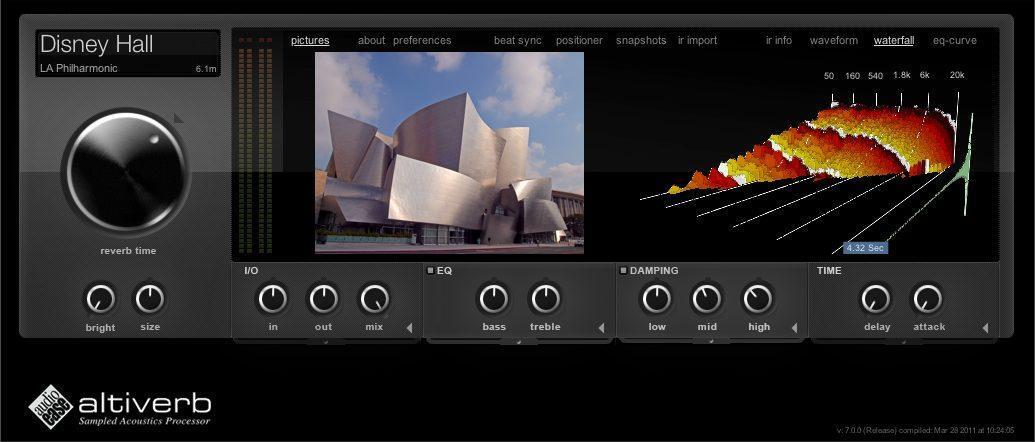
Hall reverbs replicate the sound of a concert hall. Because of their gigantic size, they have super-long decays — even as long as several seconds. These reverbs are perfect for thickening up and adding space to strings and pads. They’re also tailor-made for orchestral arrangements. That said, because of their thick, layered sound, halls can really muddy up a mix if you overuse them. A hall-reverb-saturated track that sounds huge in isolation can actually sound puny and washed-out when heard in context with other instruments.
Chamber Reverb
Chamber reverbs are similar to halls, delivering a lush, ambience-soaked sound. But they also give you an extra dose of clarity, which safeguards against the washed-out effect inherent in many hall reverbs. Historically, studios built reverb chambers by placing a speaker and a microphone inside of a reflective room, such as a tiled bathroom, a hallway, or a stairwell. A track would be amplified into the speaker, picked up by the microphone(s), and then routed back to the recording desk. Chamber reverbs are all over the Beatles’ classic recordings, and the chambers below Abbey Road Studios and Capitol Studios have achieved legendary status as a result. Chamber reverbs sound great on all kinds of instruments, including vocals, strings, and acoustic guitar. Chamber reverbs are also great for John Bonham–esque drums.
Room Reverb
Based on the sound of a smaller acoustic space, room reverbs sound most like the normal ambience we’re used to hearing in the real world. Room reverbs impart a natural color and liveliness to a track and also offer — in my humble opinion — the most rock ‘n’ roll–sounding vibe. They’re also the easiest to fit inconspicuously into a mix. Room reverbs are appropriate for vocals, guitars, pianos, drums — just about everything. When used in moderation, these reverbs can add space to a source while maintaining an intimate, in-person character.
Plate Reverb
Unlike hall, chamber, and room reverbs, plate reverbs don’t mimic a real-world acoustic space. One of the first types of artificial reverb, the plate reverb was originally produced using a magnetic driver (think of a speaker coil) to initiate (drive) vibrations in a large sheet of metal. The large metal plate (usually six to seven feet long by three to four feet wide) vibrated via a signal passed from a transducer. The vibrations were then captured with a contact microphone. The result was dense, warm, and inviting. The EMT 140 is easily the most celebrated of the early plate reverb designs, and it was a mainstay at Abbey Road Studios in the 1960s. Thus, you can hear it all over the Beatles’ and Pink Floyd’s early recordings. Digital re-creations of plate reverb became very popular in the 1980s, briefly becoming a staple in many guitarists’ refrigerator-sized rack rigs. The unique character of a plate reverb sounds breathtaking on vocals and snare drums, and — if used right — it can really make a track stand out.
Spring Reverb
Spring reverbs deliver a sound unlike any other. They operate similarly to a plate reverb with a transducer at one end and a pickup at the other but employ a spring (or multiple) instead of a plate. Because of their small size, spring reverbs are often found in guitar amplifiers; although, standalone spring tanks exist for studio use, as well. Spring reverbs yield a clean, bright sound and are a must-have final touch for vintage-inflected guitar tracks. They also make a cool thunderclap-like sound when you kick or slap your guitar amp. That said, we don’t advocate kicking your gear.
So Many Reverbs, So Little Time
So, there you go — five reverbs that you can try on your next mix. Keep in mind that these are general descriptions. When you consider all of the parameters available on a typical reverb plug-in, the possibilities are truly endless. Want a carpeted room or a tiled room? A studio space or an abandoned warehouse? How about the Musikverein? Or a phone booth? Thanks to modern digital technology, you have all that and more at your fingertips. Don’t be afraid to experiment! If you have any questions about reverb, then give your Sweetwater Sales Engineer a call at (800) 222-4700. They’ll be happy to share their knowledge with you!
Recommended Hardware Reverbs
- Bricasti Design Model 7 Stereo Reverb Processor
- Eventide H9000 Multi-channel Effects Platform
- Lexicon PCM96 Stereo Reverb/Effects Processor


